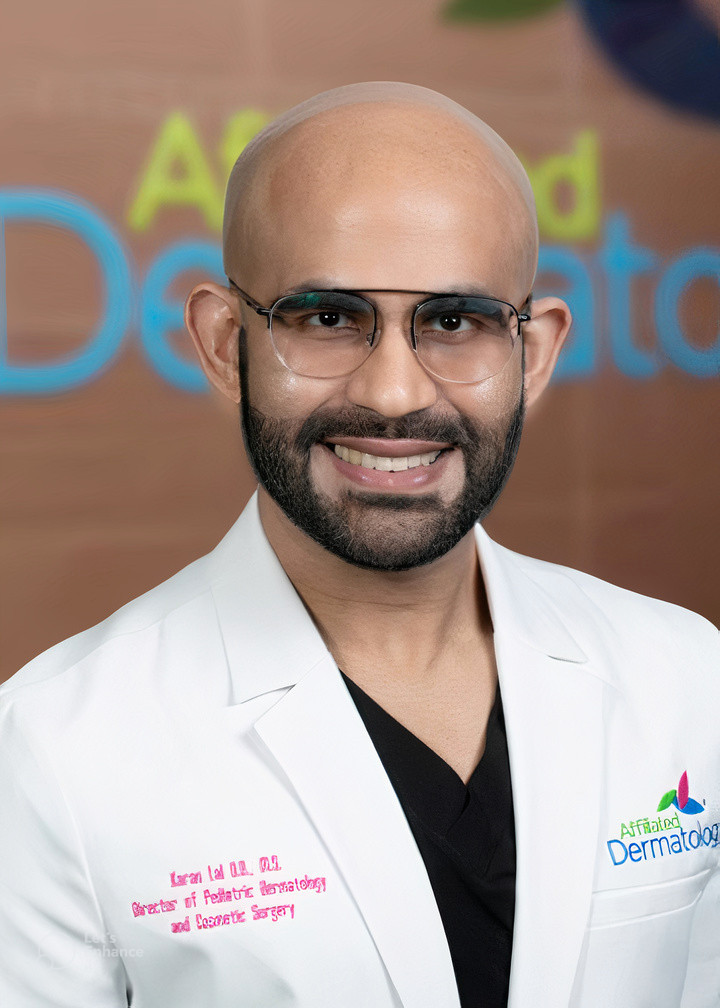By: Dr. Karan Lal, Director of Pediatric and Cosmetic Surgery, Affiliated Dermatology
As we enter the sunniest months of the year, it is easy to achieve a “summer glow,” but there are a few basic ultraviolet rays (UV) protection tips that are essential to remember whether you are inside or outside.
Protecting your skin is crucial – there are an estimated 100,000 melanoma cases diagnosed each year, and individuals have a greater chance of their own skin cancer diagnosis if they aren’t being cautious. The process of protecting your skin begins with the education of UV rays.
UV rays and the effects of over-exposure
UV rays are a form of radiation, and they have positive and negative effects on our skin. The benefits include the production of vitamin D, which also helps the body to absorb calcium and phosphorus from food and assists in bone development. However, too much time in the sun can cause harm. Short-term over-exposure can lead to sunburn and premature again. Long-term effects can be much more serious and include various eye diseases and skin cancer if proper skin protection is not used.
Preventative measures to consider
The most well-known way to protect your skin from UV rays is by wearing sunscreen. Individuals should apply their sunscreen on dry skin at least 20 minutes before sun exposure. In addition, those in the sun should reapply every two hours.
Another preventative measure is avoiding sun exposure during hours that the UV is strongest – which is typically between 10 a.m. and 4 p.m. Not only is the sun the strongest at that time but there are more harmful rays that are likely to cause sunburn or the early stages of skin cancer.
Finally, it is important to remember that wearing protective clothing and sitting shade can minimize the sun’s harmful effects. However, direct sunlight is not the only place where harmful UV rays can be found.
Indoor exposure
Tanning beds and fingernail paint dryers are two locations where harmful UV rays can be unsuspecting. When you are using a tanning bed, you should never exceed the 20-minute limit, and if you are fair-skinned or have a family history of skin cancer, you should consider an even shorter duration. This is because users are exposed to UVA and UVB rays which can exacerbate over-exposure symptoms.
Nail dryers have a similar effect. The UV rays in these dryers can damage our DNA, leaving this area at risk for skin cancer. Occasional use of these products is okay, but I recommend being cautious and considering alternative options at the nail salon if you can.
Whether you are enjoying a relaxing indoor activity or spending time outside, UV rays can cause damage to your skin, but eliminating over-exposure is attainable. It is up to us to take the necessary steps to protect our skin by using sunscreen, avoiding the sun during the strongest hours of the day, and wearing preventative clothing. If you are concerned about a mark on your skin, visit your local dermatologist for a proper skin check.

About Affiliated Dermatology
Physician owned and operated, Affiliated Dermatology® provides an unmatched patient experience to Arizonans. Founded in July 2002 by Dr. Richard L. Averitte, Jr., Affiliated Dermatology®️ is a full-service dermatology group with nine locations providing skin cancer prevention and treatment, medical and aesthetic dermatology services, and allergy testing. Our team is committed to inspiring and empowering you to make educated, healthy decisions about skincare.
Read more Health and Wellness articles on Green Living.






